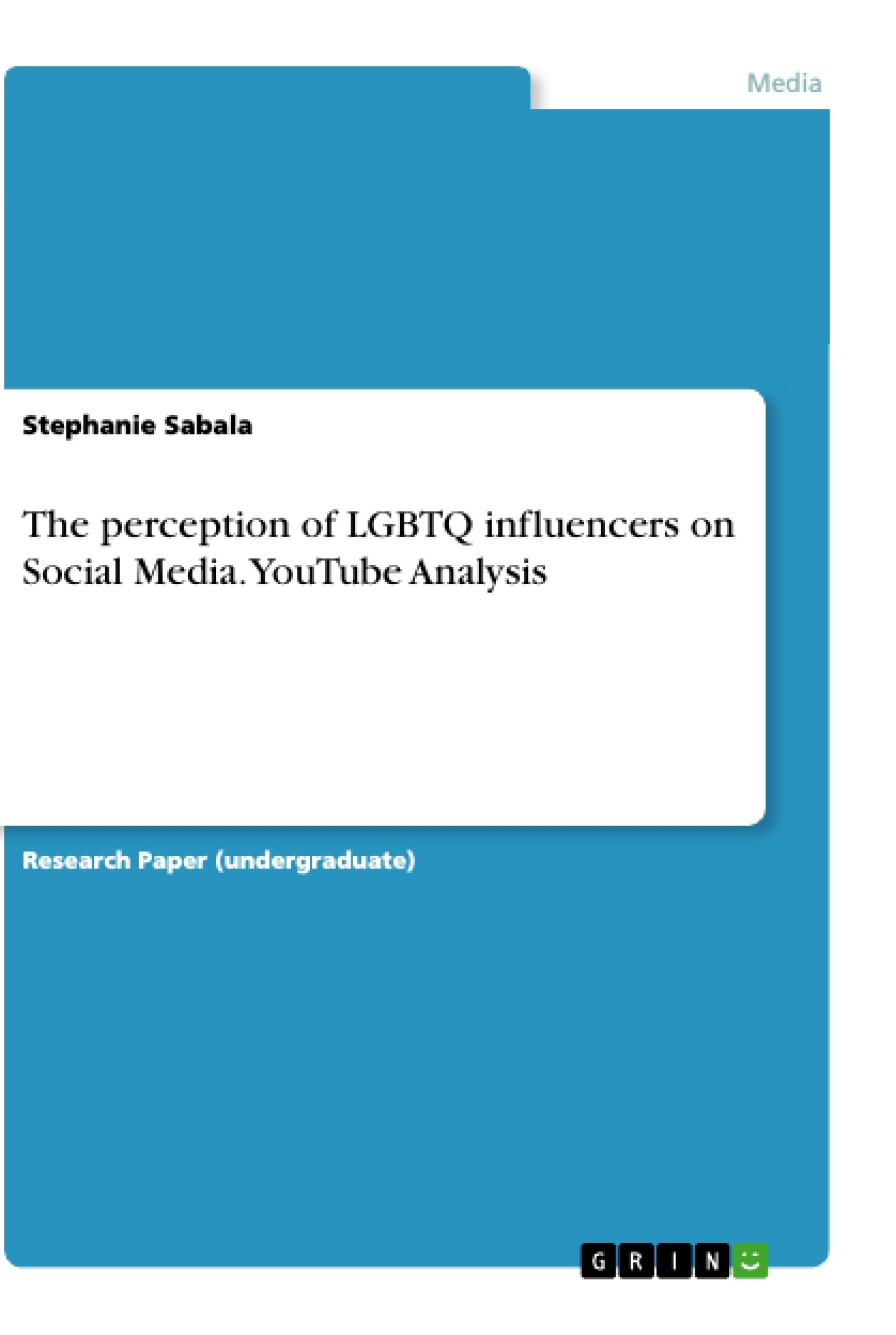Social media brand influencers are on the rise, especially those who promote lifestyle brands. While many social media users are capitalizing on the “brand influencer” trend, people who identify as the LGBTQ, still struggle to connect with heterosexual audience as brand influencers. YouTube is a visual medium which allows brand influencers to communicate their expertise and enhance credibility.
Using the source of credibility theory which posits that persuasiveness of the message in based on the perceived credibility of the source, this study investigates how the LGBTQ and heterosexual influencers were perceived by the users on the YouTube platform. Research questions: RQ1: How do the users respond to content posted by beauty vloggers? RQ2: Does sexual orientation of the influencer impact engagement with their content?
Top videos were analyzed: the LGBTQ influencers were Ingrid Nilsen, Bretman Rock, and Nikita Dragun, and the heterosexual influencers were Nash Grier, Camila Coelho, and Marcus Butler. The comments were extracted with YouTube comment Scrapper, which allows you to extract information such as comment text, replies, username and date. I imported the data to the DiscoverText platform to extract the duplicates and filter comments made in other languages. The final sample was coded for the tone of the comment – positive, negative or neutral.
The LGBTQ influencers received negative or neutral comments. Comments focused on appearance and sexual orientation rather than beauty routines. The main keywords on the LGBTQ were: amazing, proud, support, and love. While heterosexual influencers received positive or neutral comments, motivational and compliments comments towards the influencers. The main keywords found on the heterosexual influencers were: looks, love, content, and change. Overall, the YouTube commenters focused on the quality and content of the videos when it came to engaging with the LGBTQ influencers. However, the users engaging with with content proposed by heterosexual influencers tend to focus on the influencers’ appearance rather than the content.
A follow-up study could explore user engagement with brand influencers on Instagram to see if there are any differences in the level of engagement based on the influencer’s sexuality. It would also be interesting to interview some of the brand influencers to understand how they respond to comments left on their accounts.
Inhaltsverzeichnis (Table of Contents)
- Introduction
- Methodology
- Netnography
- Data Collection
- Coding Process
- Procedure
- Data Extraction
- Data Analysis
- Word Clouds
- Network Analysis
- Sample
Zielsetzung und Themenschwerpunkte (Objectives and Key Themes)
This study aims to investigate the perception and engagement of LGBTQ influencers on YouTube, specifically analyzing the credibility and perception of both LGBTQ and heterosexual influencers. This research utilizes netnography to understand how the source of credibility theory affects the persuasiveness of communication within the context of social media influencer marketing.
- Perception of LGBTQ influencers on social media
- Credibility and perception of LGBTQ vs. heterosexual influencers
- The influence of social media on brand endorsements
- The impact of source credibility on communication persuasiveness
- The role of netnography in understanding online communities
Zusammenfassung der Kapitel (Chapter Summaries)
- Introduction: The introduction sets the context for the study by highlighting the rising prominence of social media influencers and the importance of analyzing their impact, particularly within the LGBTQ community. It introduces the source of credibility theory, which will be used to analyze the data.
- Methodology: This chapter outlines the research methodology used, explaining the application of netnography and its suitability for analyzing online communities. It details the data collection process, including the specific YouTube channels and videos analyzed, and the chosen time frame. It also discusses the coding process used to categorize the comments.
- Procedure: This chapter elaborates on the procedures involved in data extraction, analysis, and visualization. It explains the use of YouTube comment scrapers and the DiscoverText platform for text analysis. It also outlines the binary coding system and the creation of word clouds and network analysis graphs.
- Sample: This chapter presents the specific influencers and videos selected for analysis, providing details about each influencer's content focus and community.
Schlüsselwörter (Keywords)
This study focuses on LGBTQ influencers, social media marketing, source of credibility theory, netnography, YouTube, data analysis, word clouds, network analysis, and community engagement.
- Quote paper
- Stephanie Sabala (Author), 2019, The perception of LGBTQ influencers on Social Media. YouTube Analysis, Munich, GRIN Verlag, https://www.grin.com/document/494224




